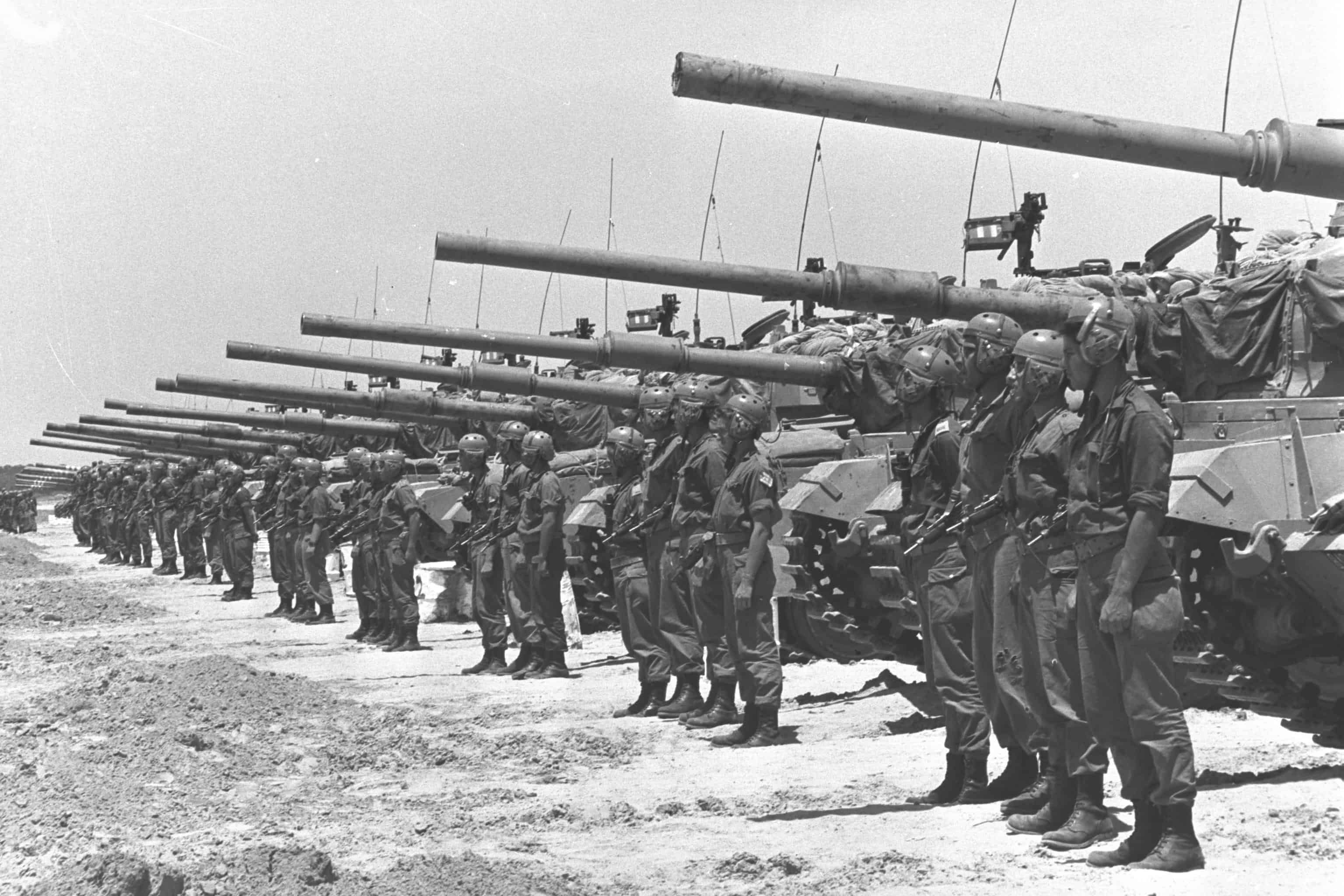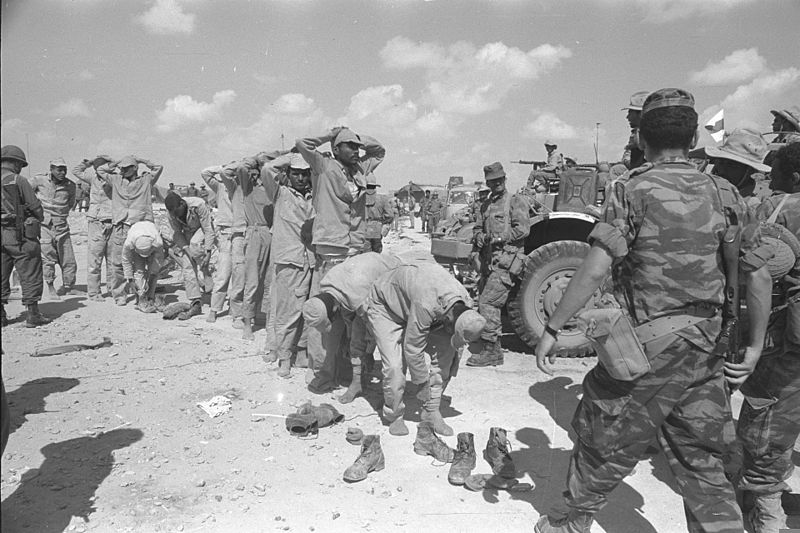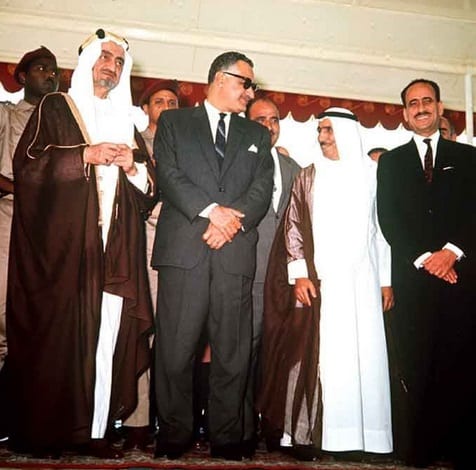Key Facts & Summary
- The Six Days War, also known as the June War or Arab-Israeli War, happened between June 5-10, 1967. The conflict involved Israel and the Arab countries – Syria, Egypt, Jordan, and Iraq, supported by Kuwait, Saudi Arabia, Algeria, and Sudan.
- Although the Zionist state was the winner of the war, it was the most consistent Arab response to the founding of the State of Israel.
- On the evening of the first day of war half of the Arab aviation was destroyed. On the evening of the sixth day, the Egyptian, Syrian and Jordanian armies were defeated.
- Even more symbolic than the Arab defeat was the capture of the old city of Jerusalem. Israel considered this city as its capital without the recognition of most of the international community.
- The results of the Six Days War still influences the current geopolitics of the region.
Overview
The growing tensions between the Arab countries and Israel in the mid-1967 led both sides to mobilise their troops. The conflict did, in fact, begin when the Israeli air force launched a pre-emptive strike against the Egyptian Air Force bases in Sinai (Operation Focus). Israel claimed that Egypt was preparing to wage war against its nation. Whether the Arab countries were actually mobilising their troops in order to advance against the Israelis, or whether their preparations were merely defensive measures, it is still to this day a matter of debate and controversy.
On June 4, 1967, Israel was surrounded by Arab forces that were far more numerous than their own and their plan of invasion seemed doomed to fail, until the Mossad thought of a solution. War was imminent.
In the face of imminent Arab action, before the invasion began, Israel’s government and military leaders had implemented a strategy to break the military blockade imposed by the Arabs. Shortly after, on June 5, at 8:45 they launched an air strike against the Arab forces.
This air raid, codenamed ‘Moked’, was designed to destroy the Egyptian Air Force while it was on the ground. In three hours most of the planes and bases were destroyed. Israeli fighters operated continuously: they returned to refuel and armour in just seven minutes. On this first day, the Arabs lost more than 400 airplanes; whereas Israel lost 20. These air strikes gave Israel the chance to destroy the Arab defence forces. The initial idea was only that of rendering the Egyptian air base inoperative, making it impossible for any military aircraft to take off.
Subsequently, Israel’s ground forces moved to the Sinai peninsula and the Gaza Strip where they surrounded the Egyptian units.
The war was not far from the eastern front of Israel. Israel’s Prime Minister Levi Eshkol sent a message to King Hussein of Jordan, claiming that the Israelis would not take any action against Jordan unless his country attacked them first. But on the morning of the second day, Nasser phoned Hussein, encouraging him to fight. He told Hussein that Egypt had been victorious in the morning fight – although such claim made by Nasser caused an overwhelming defeat for Jordan, it succeeded in preventing Israel from taking Amman.
On the same day, at 11:00 am, Jordanian troops attacked Israel from Jerusalem with mortars and artillery. With full control of the skies, Israeli ground forces were free to invade Egypt and Jordan. Because of this, the reinforcements that were sent in had serious setbacks, which allowed the Israelis to take much of the Jordanians’ city in just 24 hours.
On the third day of the war, June 7, Jordanian forces were driven into the Transjordan, on the other side of the Jordan River. Israel had annexed the whole of Transjordan and Jerusalem, entering and reunifying the city.
The United Nations, under American pressure, initiated calls and negotiations with the Arab countries involved. Fortunately, a cease-fire agreement was reached between Israel and Jordan, and it came into effect that same afternoon. After the ceasefire, Israel’s large contingent of troops and tanks was directed against the forces of Egypt in the Sinai desert and the Gaza Strip. The Israel Defence Forces attacked with three divisions of tanks, parachutists and infantry.
Being aware of the fact that the war could only last a few days due to the UN’s appeals, the belligerent parties understood that a rapid victory and domination of the neighbouring territories was essential. Although they were aware of possible reactions, the Israelis concentrated all their power across the Egyptian lines in the Sinai desert.
On June 8, the Israelis began their attack on the Sinai desert and, under the leadership of General Ariel Sharon, they drove the Egyptians to the Suez Canal. At the end of the day, the Tzahal reached the channel and their artillery continued the battle along the front line while their air force attacked the retreating Egyptian forces (which were attempting to retreat using the few uncontrolled roads). At the end of the day, the Israelis controlled the entire Sinai Peninsula, and then Egypt. Thanks to the intervention of the United Nations, Egypt accepted a ceasefire with Israel.
In the early hours of June 8, Israel accidentally bombarded the American warship USS Liberty, off the coast of Israel, which had been mistaken for a ship of Arab troops. Thirty-four Americans died. This forced Israel to accept the ceasefire agreements proposed by the United Nations.
With Sinai under control, Israel began their assault on the Syrians in the Golan Heights on June 9. It was a difficult offensive since the Syrian forces were well entrenched. Israel sent an armoured brigade to the front lines while the infantry attacked the Syrian positions, and gained control of the hills.
At 18:30 on June 10, Syria withdrew from the offensive, accepted the UN’s appeal and signed the armistice.
It was the end of the war on the battlefields and the beginning of the bureaucratic war on the UN premises.
The End of the Six Days War
The Six Day War was a defeat for the Arab States, which lost more than half of their military equipment. The Jordanian Air Force was completely destroyed. The Arabs suffered 18,000 casualties, while on the Israeli side there were 766 casualties.
On the day after the conquest of the Sinai peninsula, President Nasser of Egypt resigned because of his country’s defeat (although he later reconsidered his decision). However, this defeat did not change the attitude of the Arab States towards Israel. In August 1967, Arab leaders met in Khartoum and announced a message of commitment to the world: they were not inclined towards diplomatic negotiations and the recognition of the State of Israel since it had caused their country great harm. Such war greatly amplified the aversion of the Islamic world towards the state of Israel. Even countries that had never had friction with it ended up severing relations with Israel (as did all the other Arab countries).
As for Israel, it had achieved considerable results as a consequence of the war. The frontiers over which they had control were now larger and included the Golan Heights (whose control was shared with the Syrians), Transjordan, and the Sinai peninsula (whose control was shared with the Egyptians). The control of Jerusalem was of considerable importance to the Jewish people because of the historical and religious value, since the city was Jewish about 2000 years ago when the Romans expelled the Jews. Since then, over the centuries, Jerusalem had almost always been under the control of great empires such as the Byzantine, the Ottoman, and the British empires, and it was only after the war that it returned to be fully controlled by the Jewish state.
Because of the war, the Palestinians fled their homes. As a result, the number of refugees in Jordan, and other neighbouring countries (especially Lebanon) increased. The conflict created 350,000 refugees, who were rejected by some neighbouring Arab states. Such refugees have constantly attacked the Israeli state in isolation from Transjordan, the Gaza Strip and even south Lebanon.
With the Israelis controlling the eastern shore of the Suez Canal, the naval route remained closed from 1967 until 1975. The fifteen ships that crossed the channel when the war broke out were stranded on the Great Bitter Lake and the Lake Timsah.
Consequences
Syria lost the Golan Heights; Egypt lost the Gaza strip that it had occupied since 1948 and the area between the Sinai Peninsula and the Suez Canal. Although Israel hoped to negotiate a peace treaty, the Arab countries that gathered at the Khartoum conference, vehemently opposed any peace offerings.
However, the great powers and the UN proposed a compromise, Resolution 242: it established Israel’s withdrawal from the occupied territories and the cessation of terrorist activities by the Palestinians. Israel adhered to it reluctantly, followed by Nasser and King Husayn of Jordan, while the Palestinians who had the support of Syria refused it, continuing their terrorist aggression towards Israel, which continues to this day.
Bibliography
[1.] Bar-On, M. (2006). Never-Ending Conflict: Israeli Military History,
[2.] Bard, M. G. (2002, 2008). The Complete Idiot’s Guide to Middle East Conflict. NY: Alpha books
[3.] Cuau, Y. (1971). Israël attaque, éditions Robert Laffont, Collection J’ai lu.
[4.] Laurens, H. (2011). La Question de Palestine, tome 4 (Le rameau d’olivier et le fusil du combattant), Fayard.
[5.] Morris, B. (1999). Righteous Victims: A History of the Zionist–Arab Conflict, 1881–1998. Random House. p. 306.
[6.] Zaloga, S. (1981). Armour of the Middle East Wars 1948-78 (Vanguard). Osprey Publishing.
Image sources:
[4.] https://upload.wikimedia.org/wikipedia/commons/a/a1/Khartoum_Arab_Summit%2C_1967.jpg



